Please click here to access the main AHDB website and other sectors.
- Home
- Knowledge library
- Bacterial leaf spot of ivy: symptoms and biology
Bacterial leaf spot of ivy: symptoms and biology
This page provides details of the symptoms and biology of bacterial leaf spot of ivy.
This information was last updated in 2023.
Symptoms
Symptoms start as small water-soaked dark green spots that are more obvious when looking at the underside of the leaves. More usually the disease is seen as dark brown to black irregular spots or larger areas on the leaves, often with a dark green water-soaked margin and surrounded by a yellow chlorotic halo. Infected leaves often senesce prematurely resulting in defoliation. Stems may also be infected resulting in cankers and dieback.
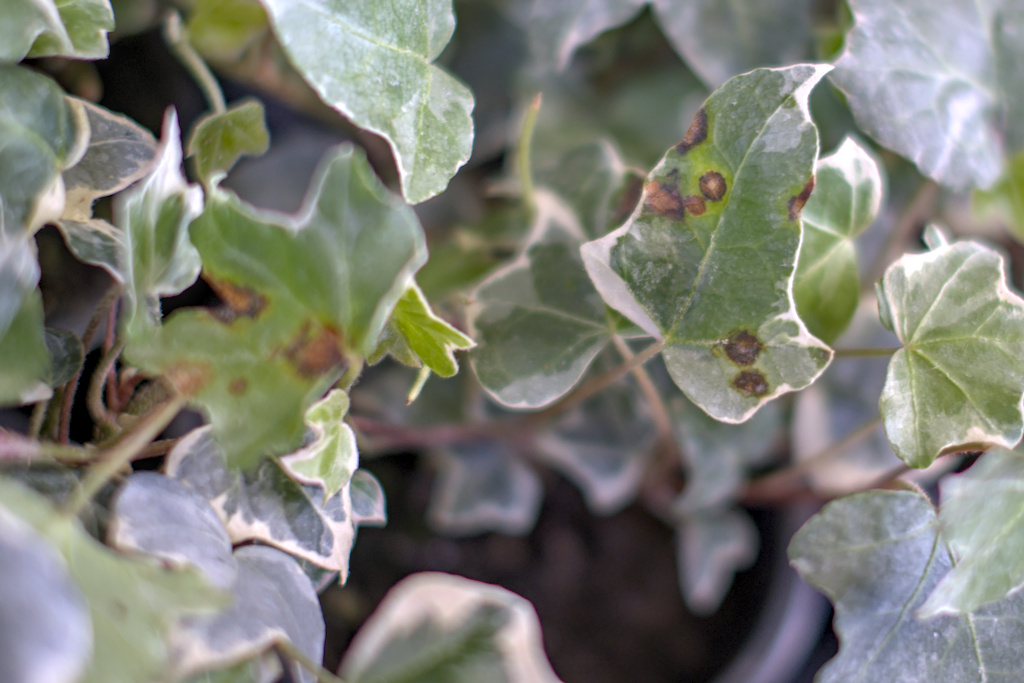 S J Roberts
S J Roberts
Figure 1. Typical bacterial leaf spots on ivy caused by Xanthomonas hortorum pv. hederae.
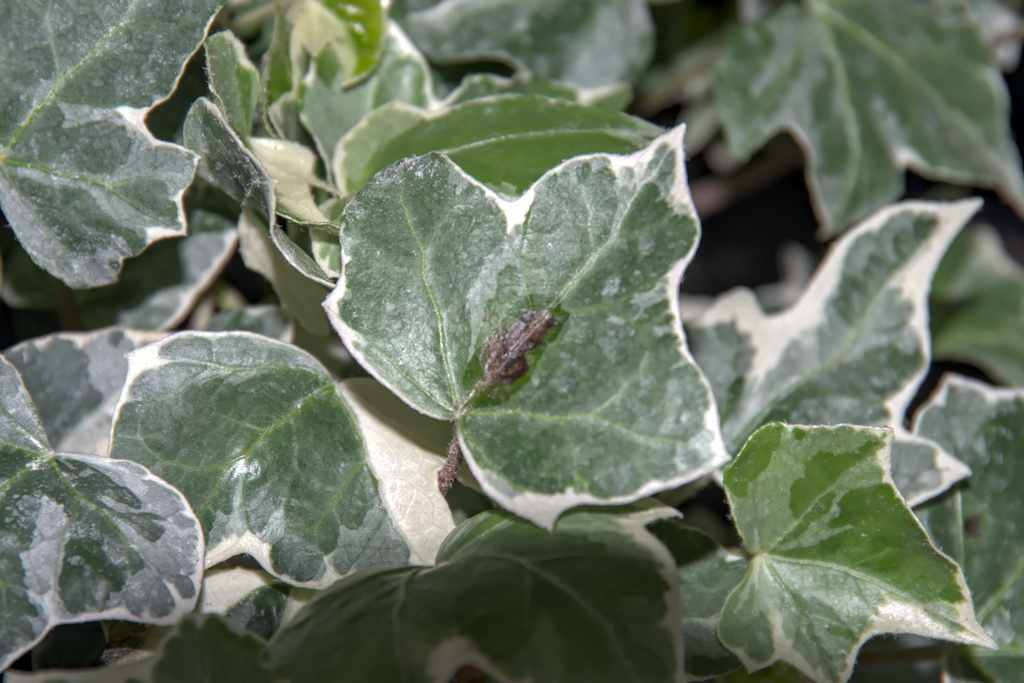 S J Roberts
S J Roberts
Figure 2. Leaf spots on ivy leaf caused by Xanthomonas hortorum pv. hederae are not always easy to see.
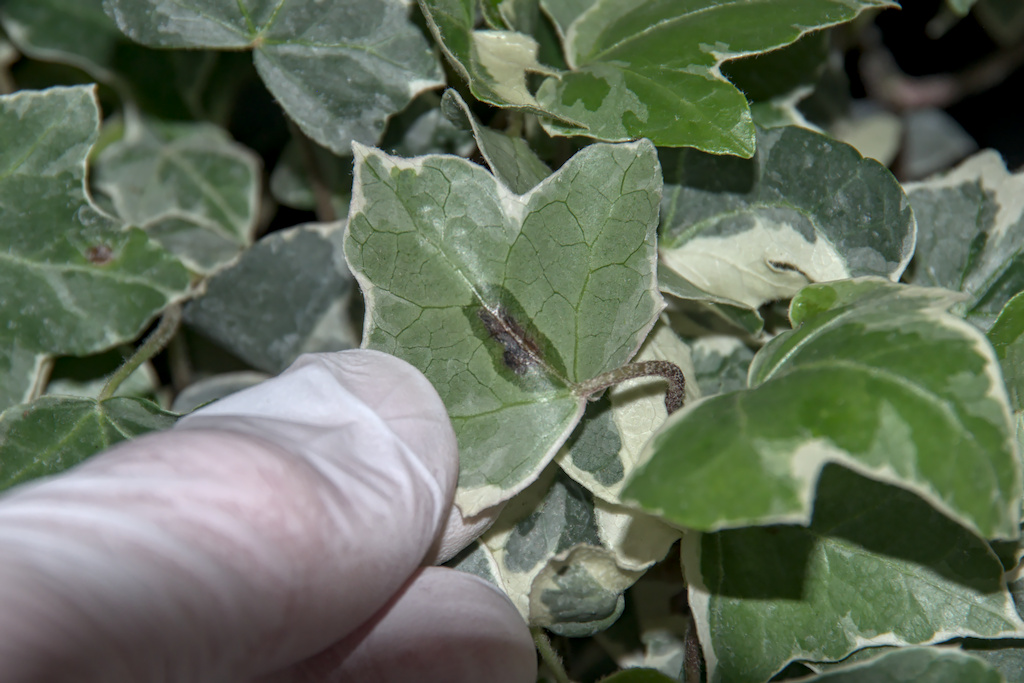 S J Roberts
S J Roberts
Figure 3. Water-soaked spots on ivy caused by Xanthomonas hortorum pv. hederae are more obvious when looking at the underside of the leaves
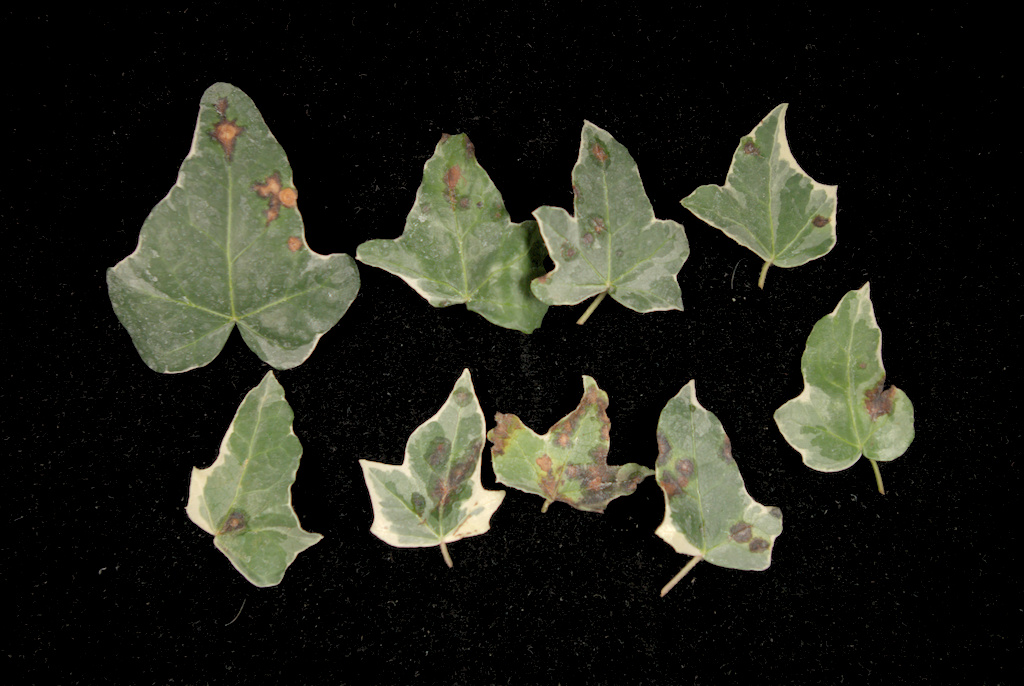 S J Roberts
S J Roberts
Figure 4. Leaves from ivy liner plants with bacterial leaf spot caused by Xanthomonas hortorum pv. hederae. Upper surface.
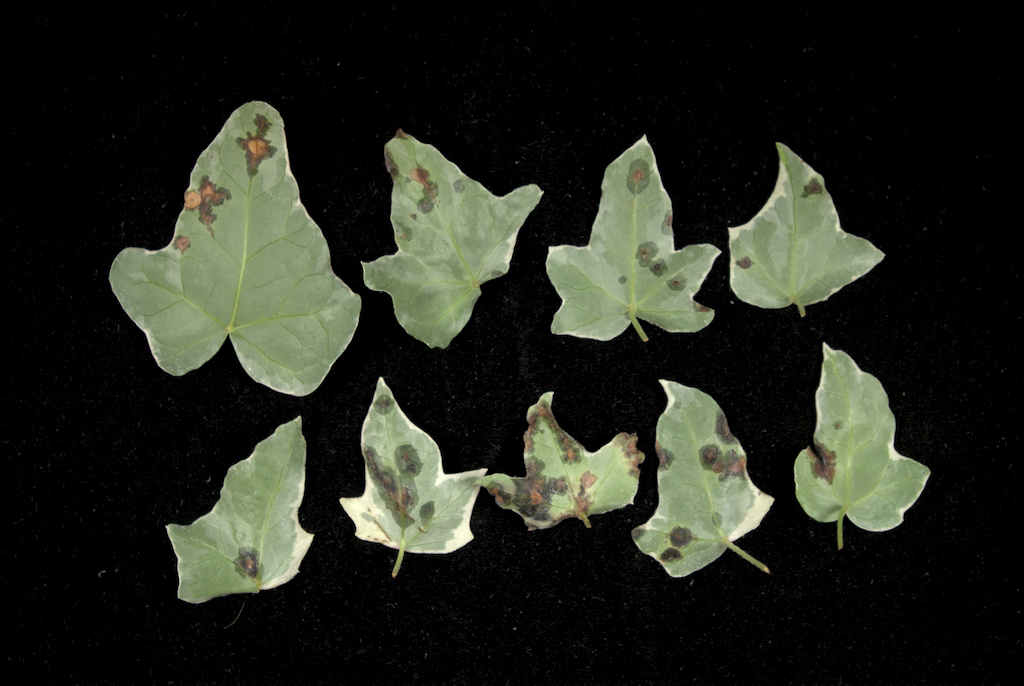 S J Roberts
S J Roberts
Figure 5. Leaves from ivy liner plants with bacterial leaf spot caused by Xanthomonas hortorum pv. hederae. Lower surface.
The pathogen
The disease is caused by the rod-shaped, motile, Gram-negative bacterium Xanthomonas hortorum pathovar (pv.) hederae (previously known as Xanthomonas campestris pv. hederae, or Xanthomonas hederae) (Xhh).
Infection and disease development
The bacteria can live on plant surfaces and enter plant tissues through natural openings, such as stomata and hydathodes (pores at the edges of leaves), or wounds. Thus, any events causing damage to plants, such as hail, frost, pruning, or other mechanical damage, may provide opportunities for infection.
Once inside the plant, the bacteria multiply and symptoms develop when populations reach high levels. The speed at which symptoms first become apparent depends on a range of factors, especially temperature, but is typically in the order of one to three weeks. A single visible leaf spot on a leaf may contain up to a billion bacteria, but even before symptoms become visible there may be as many a million in a single leaf spot. These can be released rapidly once a leaf becomes wet. Thus symptomless plants can be highly infectious well before symptoms are apparent.
Epidemiology
Propagation
Most ivies are propagated vegetatively by cuttings, and the mother-plants or stock plants (that provide the the cuttings) are the primary source of inoculum. The pathogen is disseminated with contaminated or infected plant material, i.e. cuttings, plug plants, liners. Bought-in plug plants or liners are the most common way for the disease to be introduced onto a nursery. This material may be symptomless.
Local spread
Local (within-crop) spread occurs mainly by water-splash or aerosols produced by overhead irrigation, or rain, but anything that moves within and between crops (people, animals, insects, equipment, machinery) can potentially spread the bacterium, especially in wet conditions. It is important to be aware that considerable numbers of bacteria may be present and significant spread may have already occurred before any symptoms are seen.
Irrigation
We have demonstrated the critical role of overhead water (from rain or irrigation) on bacterial leaf spot. In the plants grown outdoors with overhead irrigation, the pathogen spread to all plants by the end of the experiment, whereas there was no spread at all in the plants grown under protection with sub-irrigation. For more details see CP 191 [link to CP191 project report]
Crop debris
Xanthomonas bacteria do not produce specialised resting spores, but vegetative cells can survive for long periods (at least several months) when protected in dry crop debris. Survival in moist, decaying crop debris or free in the soil is likely to be much shorter.
Useful links
Research project CP 174: Review of bacterial pathogens of economic importance to UK crops
Research project CP 191: looking at Improved Management of Bacterial Diseases in Horticultural Crops
Final report for research project HNS 91: Bacterial diseases of HNS: Chemical control
Read the reports: Project HNS 178 Bacterial diseases of herbaceous perennials
Author
Dr Steven J. Roberts, Plant Health Solutions Ltd., Warwick, UK.
Topics:
Sectors:
Tags:

